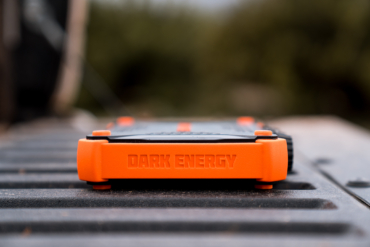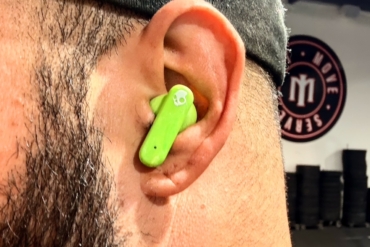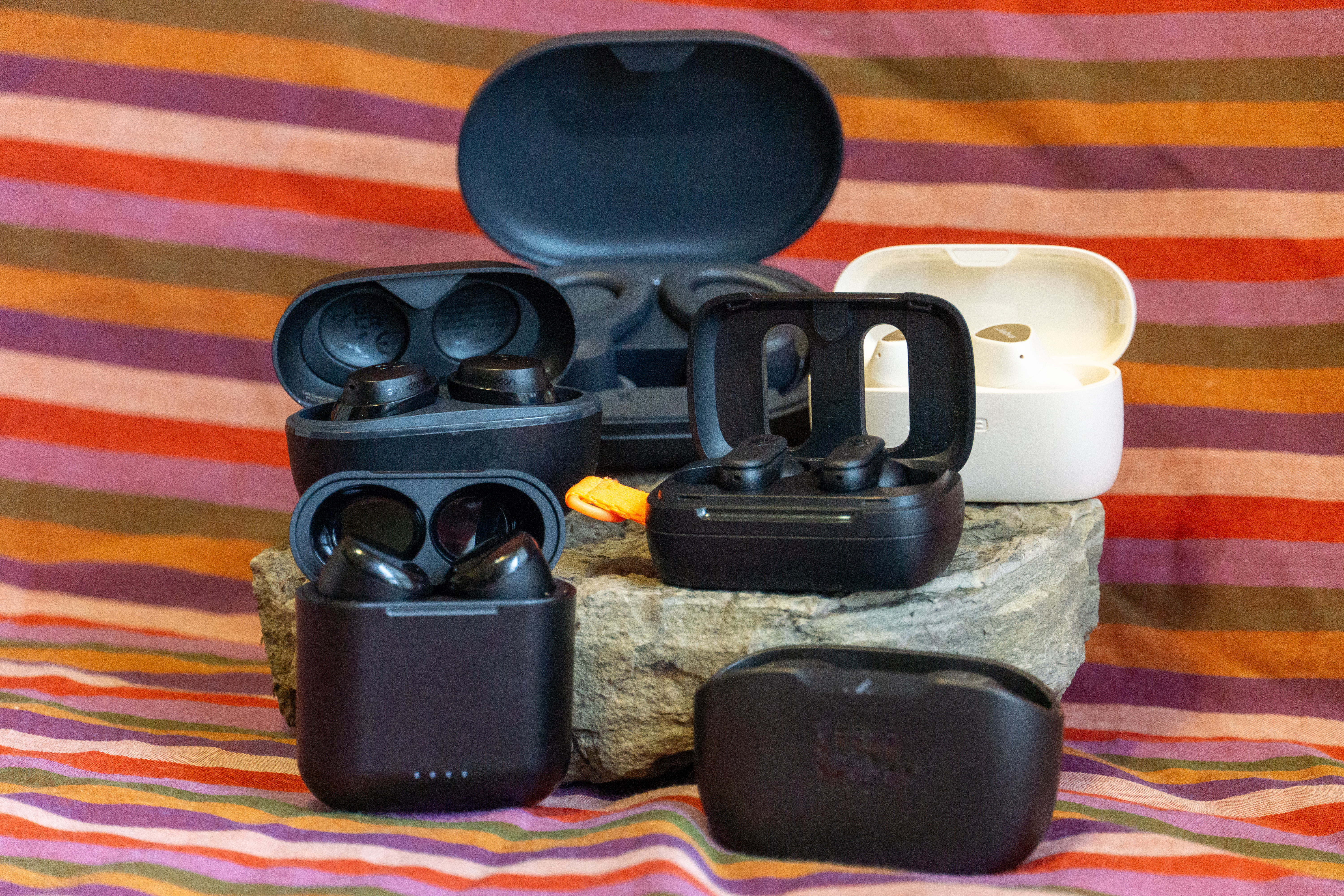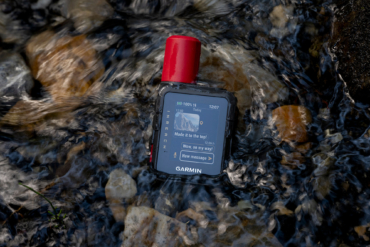Rain, snow, rocks — the outdoors can be tough on electronics, so it’s understandable that the camera market has models designed to withstand the elements.

Until recently shooters who wanted more control over images and interchangeable lenses in a waterproof, tough body had few options.
The Nikon 1 AW1 answers the prayers of many adventurers who want more out of their camera than simple point-and-shoot imagery. It is the first waterproof (submersible to 49 feet) and shockproof (withstands a 6-foot drop) mirror-less camera with interchangeable lenses.
Various shooting modes — from full manual to pre-programmed settings, “underwater” — along with autofocus, continuous shooting options and more make this a powerful tool.
(See more Nikon 1 AW1 sample images by the author on Page 2)
I tested the camera on a boat trip as well as during a day of rock climbing. On the boat the camera captured solid images and I didn’t worry on the wet, windy, rainy ride.
Climbing in the Gunks, the camera was un-phased by a few smacks into the rocks while dangling from a strap. Sure, a few marks remained on the aluminum body, but the knocks didn’t hurt the guts.
I would have no problem taking this camera on a canyoneering trip or trusting the waterproof and shock-resistant features in outdoor adventure situations.

Let’s dig into the combination of features that make this camera truly unique:
The Sensor
The AW1, like all the Nikon 1 series cameras, uses Nikon’s CX 1” sensor (2.7x crop factor), which is about 4 times bigger than the sensors in nearly all other waterproof cameras — usually a 1/2.3” sensor (yes, sensor sizes use arcane notation. Read this article for a full explanation).
By comparison, most smartphones, including the iPhone 5, use a 1/3.2” sensor, not much smaller than the 1/2.3”. In which case, if you consider any other waterproof camera, you might as well buy a $70 waterproof case for your smartphone than spend more than double that for the cheapest waterproof camera with a slightly larger sensor.
The diagram below shows the huge differences between sensor size. The largest below is full-frame 35mm. No waterproof camera has a full frame sensor. Also, the commonly misunderstood megapixel argument enters here: 14.2 megapixels on a CX sensor is about 4 times better than a 14.2 megapixel 1/2.3” sensor.

For the time being, the CX sensor housed in a waterproof body is this camera’s biggest selling point. The interchangeable lens, while cool, doesn’t carry much weight considering there are currently only two lenses that are rated as shock- and water-proof to keep up with the AW1 body, and these lenses are similar to each other.
However, any Nikon 1 lens will fit on this camera, giving lots of non-waterproof options.
The Lenses
The shock- and water-proof lenses are a 11-27.5mm, f3.5-5.6, a solid mid-range lens, and a faster, moderately wide-angle 10mm, f2.8 prime. These are good lenses for adventuring, and the 10mm is ideal for canyoning where the wide angle will capture the feel of narrow canyons (and the f2.8 aperture comes into play in the dark corners of the canyon). Otherwise, the zoom lens will be sufficient for most outdoor activities save wildlife photography.
Twelve other Nikon lenses work on the body. While not shock- and waterproof, they add versatility to the design. If you happen to have a stockpile of Nikon F lenses, there is a converter to couple them to the AW1.

The Camera Body
The extra O-rings and internal reinforcement to make the body of the AW1 shockproof gives the camera a solid heft without being too heavy. Lacking though is a true grip. All it has is a mini version of a vertical speedbump on the front plate and a sticky rubber thumb pad on the backplate.
As with many digital cameras there’s no eye-level viewfinder. The 3-inch LCD screen is nice and sharp with 921,000 dots but is not a touchscreen and it doesn’t pop out for framing selfies or other odd angles. The built-in manual pop-up flash is waterproof.
There’s no flash shoe for an external flash, instead the GPS antenna is right at the top busy geo-tagging your photos and providing you with an altimeter and compass if you ever find yourself needing to navigate with your camera. There’s also a depth gauge if the one on your scuba kit bites the dust while diving.
Because Nikon is expecting you to be doing all kinds of active things while toting this camera around, the brand made the programmed modes and a range of auto ISO options easily accessible. But unless it’s mounted on a tripod and you’re really dialing in a shot, this camera is not easy to operate in full manual mode.
Nikon touts the “one-handed function change” next to the thumb pad. To change function, press and hold the mode button with your thumb. A menu appears on the screen with various modes that are selected by tipping the camera left or right. Release your thumb from the button when the mode you want is highlighted. The rest of the buttons are pretty standard.

Using the Camera
First the bad
While it’s great that the AW1 can shoot in RAW format, the ViewNX software is either very limited or unintuitive or both. As of this writing, the .NEF raw files the camera uses cannot be read by Adobe software products, adding another piece of software to learn and another step (or two) to the processing. All sample photos on page 2 were shot in raw and converted to JPG without any adjustments to show how the photos come out of the camera.
The good
The camera powers up quickly in just over a second. The middle button on the top is the shutter and the red dot button on the far right is to start recording HD video. If video is a priority, this makes it very easy to get going. Also, because of the mirror-less design, you can capture photos while shooting video. Unless the camera is on a tripod, you’ll probably end up putting a little shake in your video whenever you take a photo.
The video resolution options are pretty nice including the usual 1080 (60i, 30p), 720 (60p, 30p) as well as some sweet slow-motion 640 × 240 (400 fps) and 320 × 120 (1200 fps) for when your buddy hucks it off the cliff while on the aforementioned canyoning trip.
Battery life is pretty standard — shooting video will eat it up quickly. Just shooting photos though and minimizing how long you leave the screen on you could well push 1,000 photos before having to recharge.
There you have it. If you adventure in wet places and want to capture images significantly better than shooting with a waterproofed smartphone, but don’t want to buy a separate waterproof housing for (and carry around) a bigger camera, the AW1 is the camera for you. You can also expand its use in various non-water threatened environments with the interchangeable lens library.
Nikon 1 AW1 Review
- Price: $800
- Lens: Waterproof and Shockproof 1 Nikkor AW
- Lens Specs: 11-27.5mm f/3.5-5.6
- Product Page
Camera plus two lenses
- Price: $1000
- Lens: Above lens plus 1 Nikkor AW
- Lens Specs: 10mm f/2.8
Adventure Correspondent Cameron Martindell is a Senior Editor at Elevation Outdoors Magazine in Colorado and runs his own adventure website at offyonder.com. You can follow him on most social media platforms as @offyonder.





